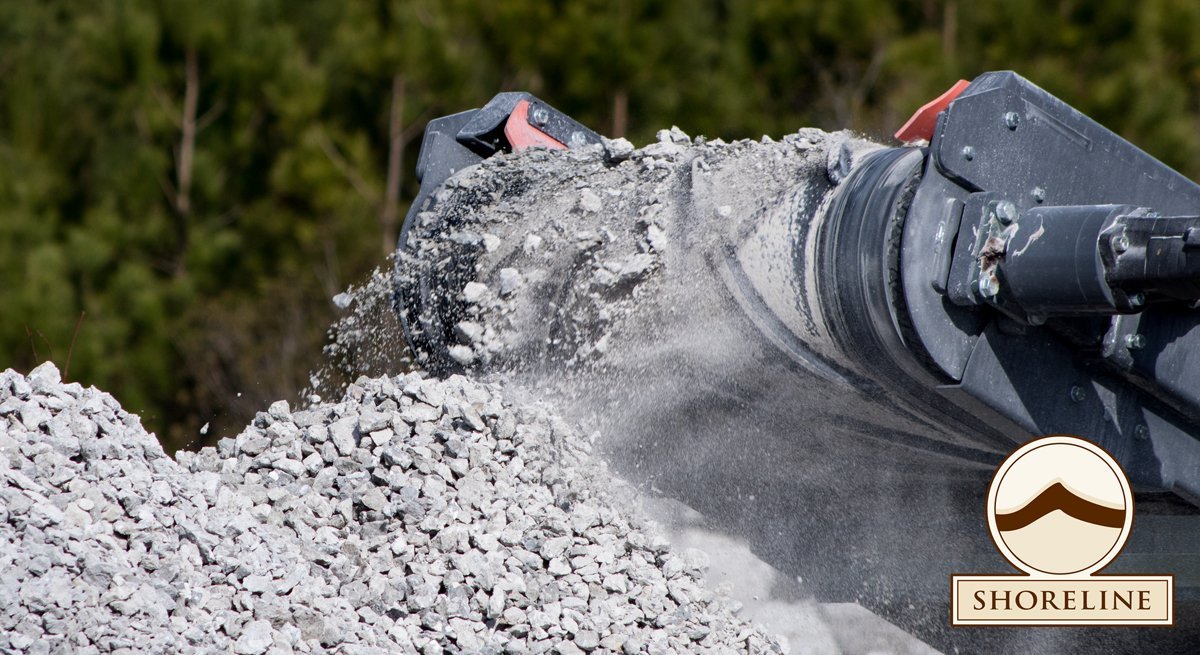Estimated reading time: 2 minutes
Thanks to increased environmental laws, and the desire to keep construction costs down, recycled concrete aggregate has quite a following. Recycled Concrete Aggregate (RCA) — also called “crushed concrete” — is made up of asphalt debris from other construction projects. Re-used as aggregate for fill, road base or even new concrete – RCA has many of the same applications as conventional crushed stone.
Where does Recycled Concrete come from?
Every year, demolished buildings, roads, bridges, and other structures generate millions of tons of debris. Concrete from these demolition sites is crushed, processed to remove metal such as reinforcing steel, and then screened to appropriate sizes.
The first step to recycling old concrete is to use industrial crushing equipment to break up the original structure. Next, broken concrete runs through a secondary impactor. After being crushed to an even smaller size, the crushed concrete is then screened so that dirt, metal and other foreign objects can be removed. After this step, the concrete is separated out by size.
Another method for recycling concrete is pulverization. Pulverizing the concrete, however, can make the separation of contaminants much more difficult, lowering the quality of final recycled concrete product.
Recycled concrete can be broken down into a variety of sizes. With varying sizes well-suited to different applications, the material incredibly versatile.
Smaller gravel bits of recycled concrete becomes part of sustainable, affordable subbase for roads or site stabilization in construction. Larger pieces become part of stabilized construction entrances. Dry aggregate can even be reconstituted as new concrete.
Industry Highlight
The first example of Recycled Concrete in the U.S. (source: Transportation Research Board Weekly) Since the 1940s, recycling concrete pavements (crushed concrete) has been a fairly common solution. The first instance in the US was following World War II. US Route 66 in Illinois needed to be expanded from two to four lanes. During this reconstruction project, the old concrete was recycled and reused in the new project.Environmental Impact of Recycled Concrete
With any concrete demolition project – be it a building or road – the demolished concrete usually finds its way to the landfill. Concrete is not biodegradable and unfortunately, will not decompose. At the same time, new concrete begins the process all over again.
Recycling crushed concrete reduces landfill crowding AND saves more resources from becoming new concrete.
Construction contractors look for affordability and strength above all else. As the world moves towards saving the environment, and governments offer tax rebates to those investing in fuel-efficient technologies; recycled concrete is an ideal way to both help the environment and a project budget.
Recycling concrete features both cost savings and environmental benefits:
- Reduced disposal of concrete in landfill
- Conservation of natural resources such as gravel, water, coal, and oil
- Reduced cost for raw materials
- Energy savings from less processing and transportation
- Reduced environmental impact, more appealing to governments and customers
Shoreline Delivers
Shoreline provides a variety of recycled concrete sizes, perfect for whatever project you are looking to complete. Our expert team can help you choose the right material for your project. Our materials meet the highest quality standards with superior customer service. Contact us today to schedule your aggregate delivery.


